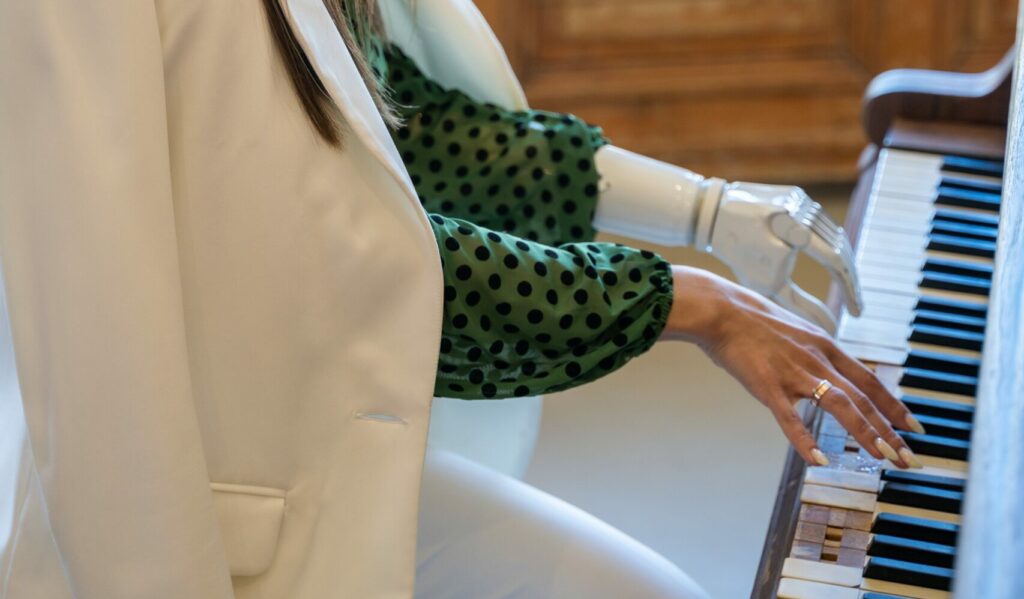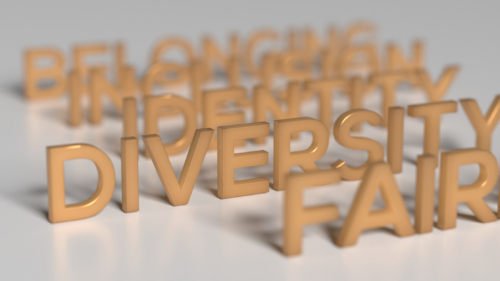Music speaks a universal language, breaking through barriers, including the physical disabilities. For those in the NDIS community, adaptive musical gear opens up a world of possibilities, letting everyone dive into the joy of making music.
Switch-adapted instruments are a fantastic starting point. These cleverly designed instruments use buttons or switches instead of traditional controls, making them ideal for those with limited hand or finger dexterity. Imagine playing a keyboard, drum, or even a guitar with the simple press of a button. It’s not just possible, it’s a reality for many musicians with disabilities.
Breath-controlled instruments offer another avenue for musical expression. These instruments, which include synthesizers, wind instruments, and even drums, are played by blowing or inhaling air. They bypass the need for physical manipulation, making them a great choice for those with limited upper body mobility.
Foot-controlled instruments are another innovative solution. These instruments, which can be played with the feet, include foot pedals for keyboards or electronic drums, and even floor-activated chimes or bells. They offer an alternative for those who may struggle with traditional hand-operated instruments.
Then there’s eye-tracking technology, a cutting-edge innovation that allows individuals with limited mobility or dexterity to control instruments with their eye movements. This technology translates eye focus into musical actions, enabling individuals to play instruments through virtual interfaces.
The world of adaptive musical equipment is constantly evolving, with new innovations continually broadening the horizons for NDIS participants. As technology marches forward, there’s an ever-growing array of instruments and tools, offering fresh avenues for musical expression and connection.
The Magic of Accessible Music Therapy: A New Approach for Musicians with Disability
Music therapy is a powerful tool that can bring about profound changes in individuals with disabilities. It’s a form of therapy that uses music to address physical, emotional, cognitive, and social needs. For NDIS participants, accessible music therapy offers a unique and enjoyable approach to rehabilitation and personal growth.
At the heart of accessible music therapy are instruments designed for musicians with disability. These instruments cater to a wide range of physical and sensory limitations, ensuring everyone can participate in music therapy sessions. Tactile instruments, for instance, provide physical feedback through vibrations or textures, enabling individuals with visual impairments to engage with music in a tangible way. Vibrotactile keyboards, textured drums, and wearable instruments that vibrate on the body are just a few examples of these innovative tools.
For those with hearing difficulties, amplified instruments can be a game-changer. These instruments can be equipped with amplifiers or connected to assistive listening devices, ensuring individuals can hear their own playing and the surrounding music. This can greatly enhance the therapeutic benefits of music therapy, as participants can fully engage with the music they are creating.
Emerging technologies are also playing a role in accessible music therapy. Robotic instruments and brain-computer interfaces are just a couple of examples of how technology is breaking down barriers in music therapy. Imagine controlling a musical instrument with your brain waves or having a robotic arm play an instrument while you control its movements. It sounds like science fiction, but it’s a reality that’s within reach.
Accessible music therapy is a testament to the power of music and the resilience of the human spirit. It’s a realm where limitations are transformed into opportunities, and where every note played is a step towards personal growth and healing.
NDIS Funding for Music
The NDIS recognises the therapeutic benefits of music and its potential to enhance the quality of life for individuals with disabilities. Therefore, it provides funding for music therapy services and adaptive musical equipment. This means that NDIS participants can access a wide range of instruments that cater to their specific needs and limitations.
For instance, NDIS funding can help individuals acquire switch-adapted instruments, breath-controlled instruments, foot-controlled instruments, and even instruments equipped with eye-tracking technology. These instruments are designed to be accessible and easy to play, even for individuals with severe physical limitations.
NDIS funding also covers tactile instruments for individuals with visual impairments, and amplified instruments for those with hearing difficulties. These instruments are designed to provide sensory feedback, making music a tangible and enjoyable experience for all.
In addition to individual instruments, NDIS funding can also be used to access accessible music software and inclusive music programs. This means that NDIS participants can not only create music but also learn and grow as musicians in an inclusive and supportive environment.
More than just financial support, the NDIS funding is a commitment to making music accessible for everyone, regardless of their physical or sensory limitations. It’s a testament to the belief that music is a universal language that everyone should have the opportunity to speak. With it, the world of music is at your fingertips.
The Power of Inclusive Music Education in the Disability Community
Many music schools and organisations offer adapted instruments, specialised instructors, and modified teaching methods to welcome musicians of all abilities. These programs recognise that every individual is unique, with their own set of strengths, challenges, and learning styles. They strive to provide a supportive and adaptive learning environment where everyone can explore their musical potential.
Adapted instruments play a crucial role in inclusive music education. These instruments, which range from switch-adapted keyboards to breath-controlled wind instruments, are designed to accommodate a wide range of physical limitations. They enable individuals to play music in ways that work best for them, fostering a sense of accomplishment and boosting self-esteem.
Specialised instructors are another key component of inclusive music education. These instructors are trained to work with individuals with disabilities, understanding their unique needs and adapting their teaching methods accordingly. They are skilled at breaking down complex musical concepts into manageable chunks, using visual aids, tactile feedback, and other adaptive techniques to facilitate learning.
Inclusive music education also embraces the use of accessible music software. This software, which includes features like screen readers, large fonts, and keyboard shortcuts, makes composing and arranging music more accessible for individuals with visual or dexterity limitations.
Indeed, inclusive music education is more than just teaching music. It’s about empowering individuals, fostering a sense of belonging, and celebrating diversity.
Unveiling the Benefits of Music Therapy for NDIS Participants
Music therapy is a transformative tool that holds immense potential for individuals with disabilities. It’s a therapeutic approach that uses music to address a range of physical, emotional, cognitive, and social needs. For NDIS participants, the benefits of music therapy are manifold, making it a worthwhile avenue to explore.
One of the key benefits of music therapy is its ability to improve physical health and functioning. Playing an instrument can enhance fine motor skills, coordination, and muscle strength. For instance, playing a switch-adapted drum can help improve hand-eye coordination, while a breath-controlled wind instrument can aid in respiratory health.
Music therapy also offers significant emotional benefits. It provides a creative outlet for self-expression, allowing individuals to communicate their feelings and experiences in a non-verbal way. This can be particularly beneficial for those who struggle with verbal communication or emotional expression. The act of creating music can also boost self-esteem and confidence, fostering a sense of accomplishment and self-worth.
Cognitively, music therapy can enhance memory, attention, and cognitive flexibility. Learning to play an instrument, for instance, requires focus, pattern recognition, and problem-solving skills. Moreover, music can stimulate the brain in a unique way, activating multiple areas simultaneously and promoting neural plasticity.
Socially, music therapy can foster a sense of community and belonging. Participating in a music therapy group can provide opportunities for social interaction, cooperation, and mutual support. It can help individuals feel connected to others, reducing feelings of isolation and loneliness.
In conclusion, music therapy is a powerful tool that can enhance the quality of life for NDIS participants in numerous ways. It’s a one avenue to the transformative power of music and its ability to heal, empower, and connect us. So, if you’re an NDIS participant, why not explore the benefits of music therapy? It could be a life-changing experience.
Conclusion
The developments in accessible musical instruments is a vibrant and inclusive one, offering a wealth of opportunities for NDIS participants. From adaptive equipment to innovative technologies, there are countless ways to make music accessible and enjoyable for everyone. Whether you’re an individual with a disability seeking to express yourself through music, an educator looking to create an inclusive learning environment, or simply a music lover eager to explore the latest in assistive music technology, there’s something for you in this space.
Remember, music is a universal language that transcends all barriers, and with the right tools and support, everyone can have the chance to speak it. Go and embark on this melodious journey and discover the joy of making music. After all, in the world of music, there are no limitations, only possibilities.
Frequently Asked Questions
1. Q: What are switch-adapted instruments?
A: Switch-adapted instruments are musical instruments that use buttons or switches instead of traditional controls. They are designed for individuals with limited hand or finger dexterity, allowing them to play music with the simple press of a button.
2. Q: How does NDIS funding support music for individuals with disabilities?
A: NDIS provides funding for music therapy services and adaptive musical equipment. This allows individuals with disabilities to access a wide range of instruments that cater to their specific needs and limitations, making music more accessible and enjoyable for them.
3. Q: What is inclusive music education?
A: Inclusive music education is about creating a learning environment where everyone, regardless of their physical or sensory limitations, can participate, learn, and thrive. It involves the use of adapted instruments, specialised instructors, and modified teaching methods to accommodate all abilities.
4. Q: How can music therapy benefit NDIS participants?
A: Music therapy can improve physical health and functioning, provide a creative outlet for self-expression, enhance cognitive skills, and foster a sense of community and belonging. It can enhance the quality of life for NDIS participants in numerous ways.
5. Q: What is the future of assistive music technology?
A: The future of assistive music technology is promising, with developments like accessible music software and emerging technologies like brain-computer interfaces and robotic instruments. These innovations are making music production more accessible for everyone, including NDIS participants.






 James
James 

